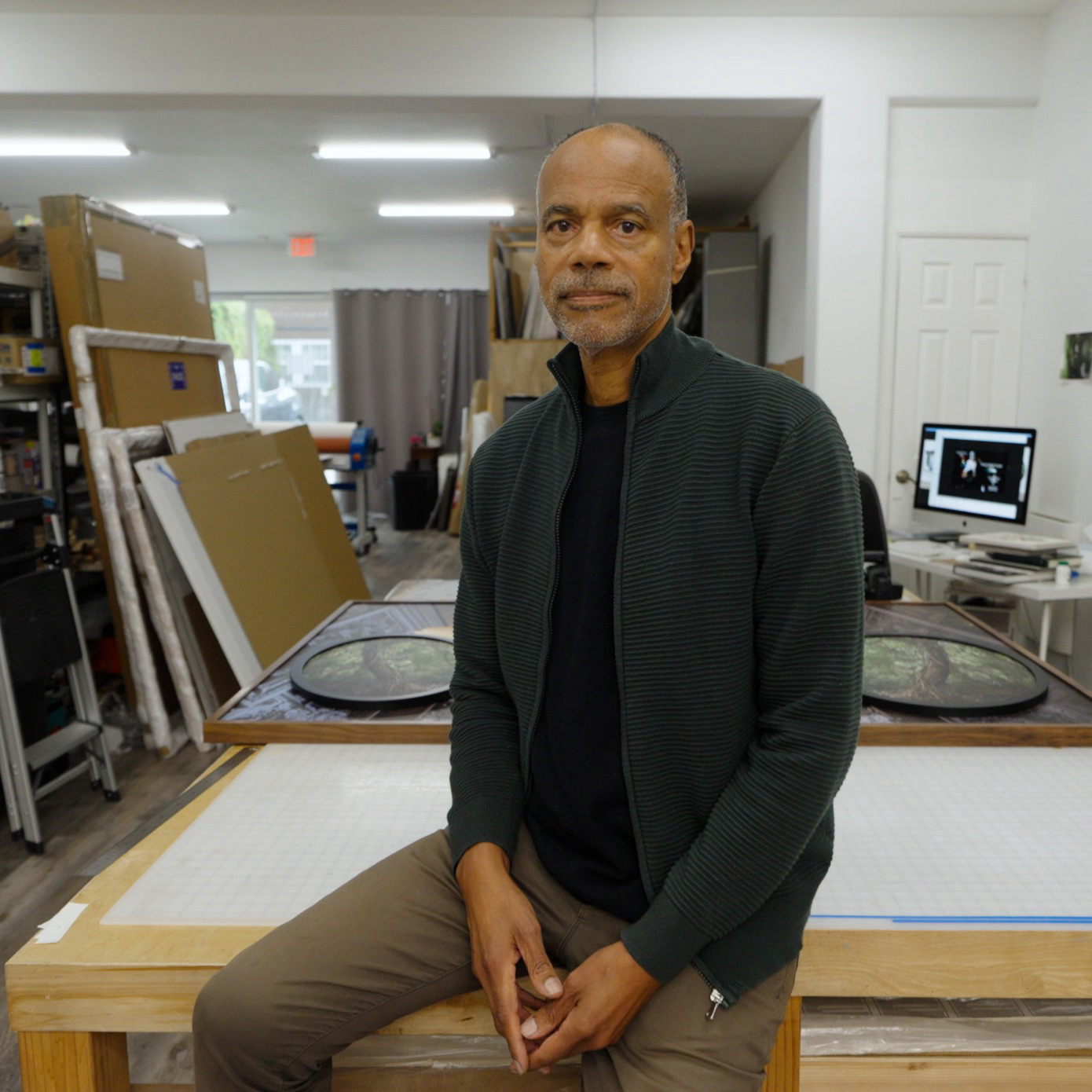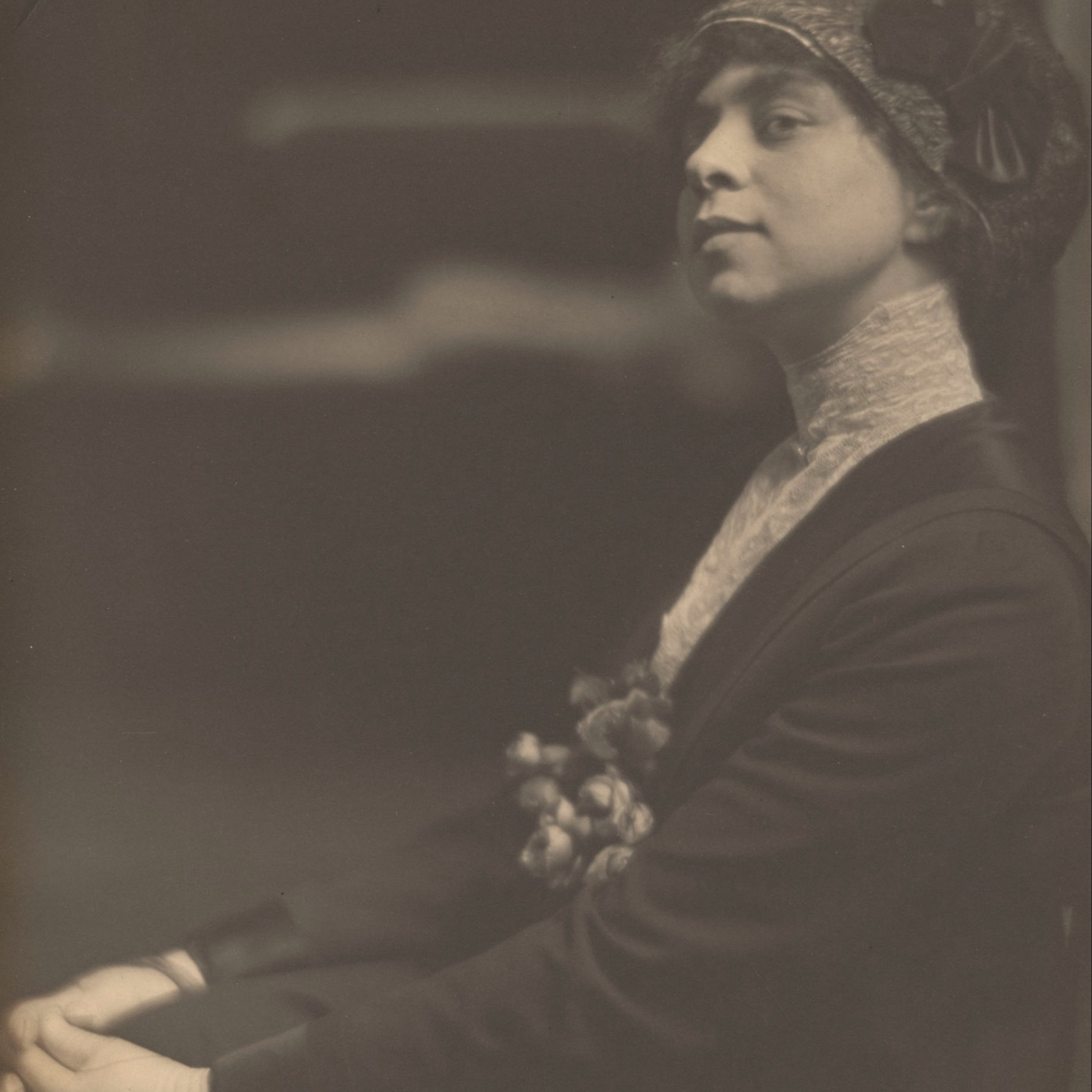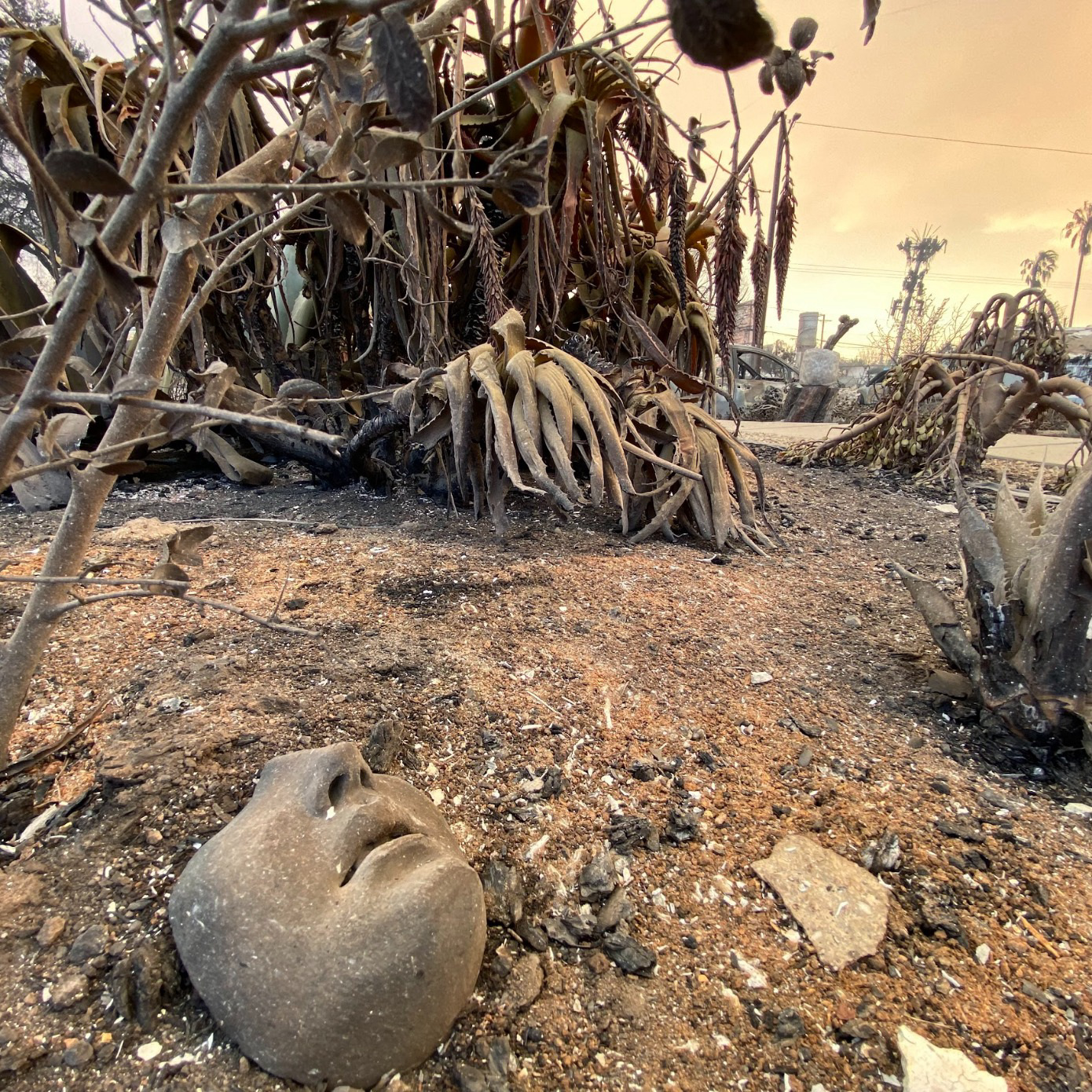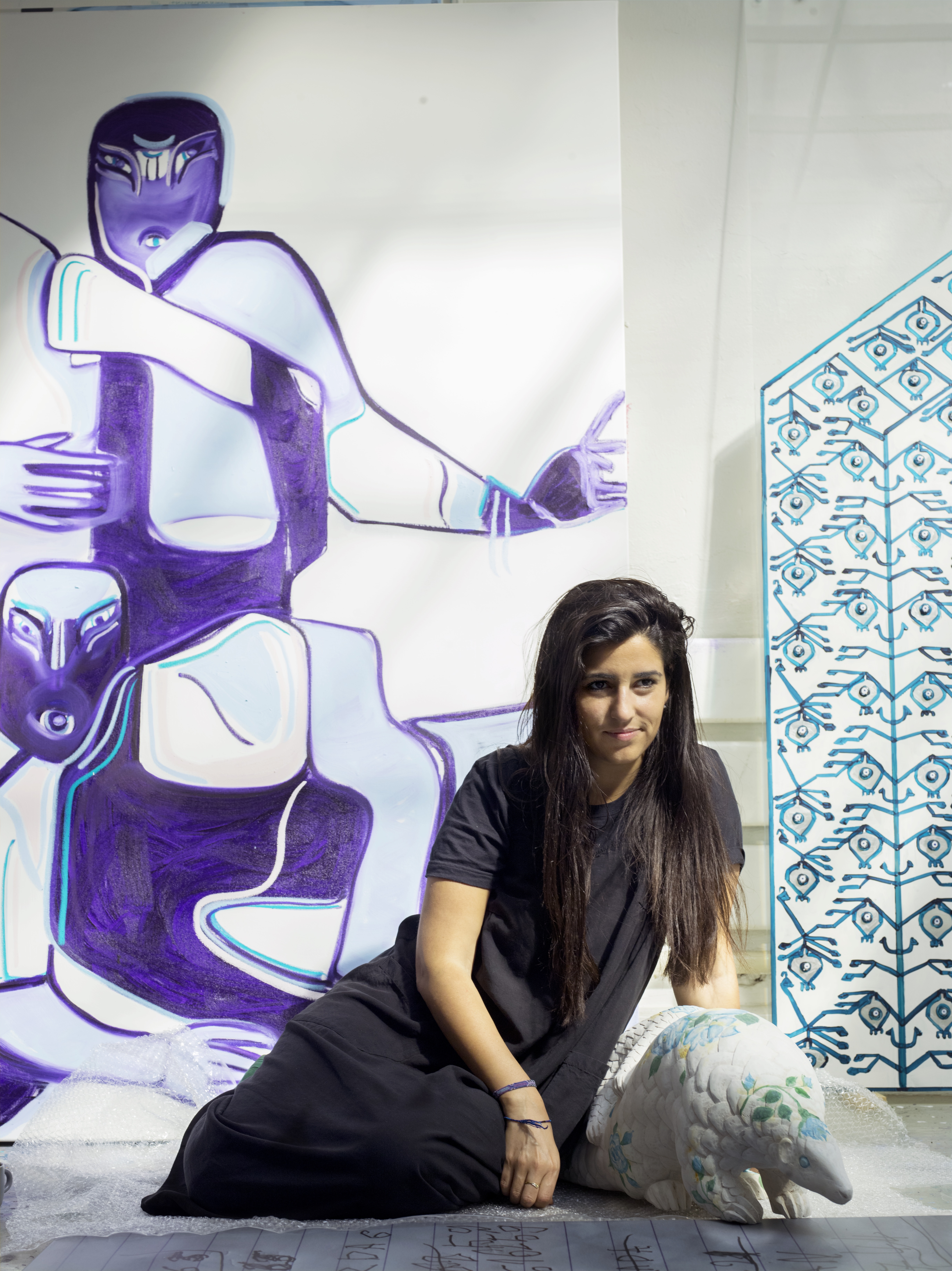
My second house was haunted. I never saw a ghost, but I felt one. I considered it more or less benevolent with the exception of midnight walks to a cold toilet seat.
Occasionally I feel this same creeping sensation staring into the eyes of figurative paintings or security cameras. At Melike Kara’s studio in Cologne, I was under constant surveillance, but the source was hard to pinpoint.
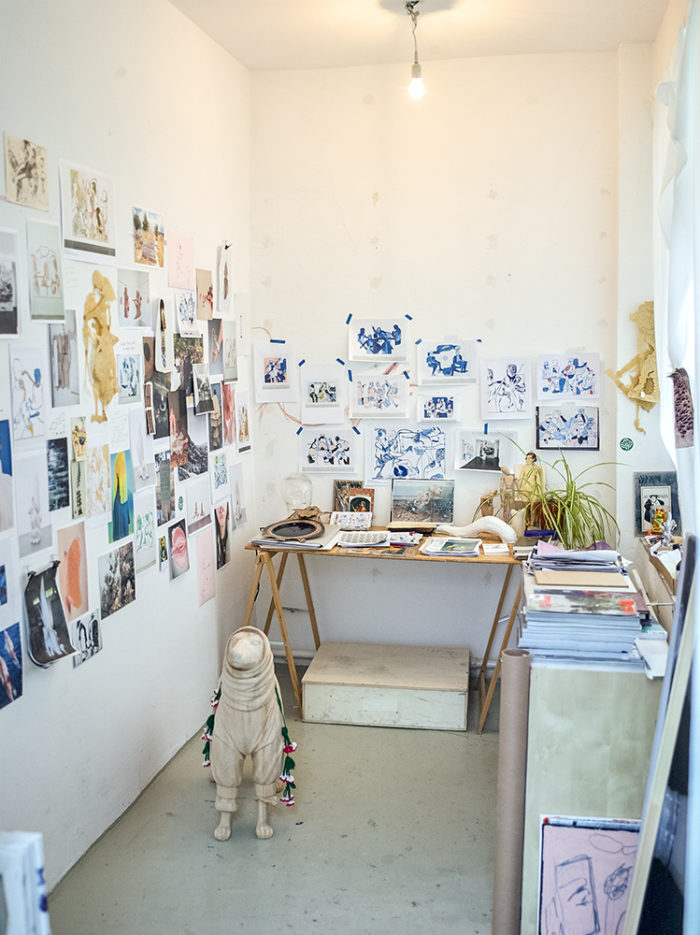
You can’t walk by one of Kara’s oil stick paintings without catching a gaze. Her jumbles of purple, pink and blue bodies seem to follow you without any effort, but it was the omnipresence of Kara’s grandmother that seemed to dominate the room on an unseasonably warm visit in April. “She’s always with me,” Kara says, motioning to a paper cut-out of her grandmother’s face affixed to a wooden madonna. “She’s the guardian angel of the studio.”
The artist’s family has always played a critical role in her work. Her great-grandfather was the shaman of his Turkish village and the artist remembers the kind of magnetic pull her grandmother had during their visits. “Everyone wanted to touch her,” Kara says. “The Kurdish belief is that a shaman has magical powers for healing. If you visit and commune with them in their temple, they can help you manifest your wishes.”
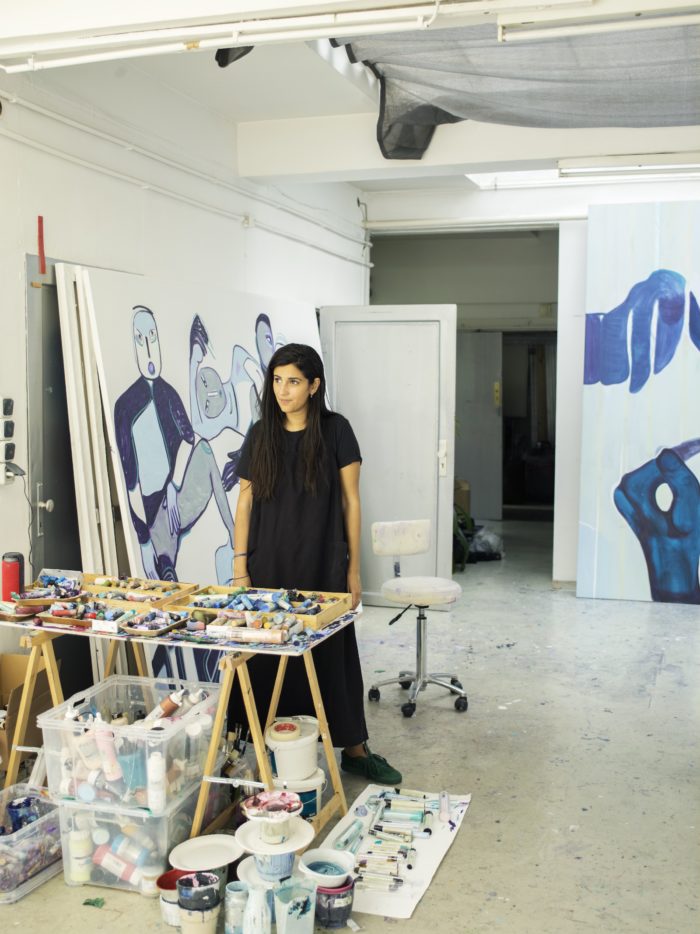
This July, Kara plans to create her own oasis at the Yuz Museum in Shanghai for “A Taste of Parsley,” her first institutional solo show. During our visit, she was working on a series of semi-transparent panels, which she plans to dangle from the ceiling in order to create a temple within the museum hall. Each hand-painted pane is at once a window and a wall— a dynamic that Kara hopes will help visitors feel protected while taking in the army of new figures that flank them on either side. “Everybody sees something different in my images,” Kara says. “I wanted to push this idea and think about the way I could create new frames for looking and for being looked at. Identity is not static, it is constantly in flux like a performance or a narrative.”
Certainly when observing Kara’s figures I find myself constructing my own stories about how they all ended up together and who is in charge. For hints I bury myself in the details, some of which are inspired by the psychedelically-colored tassels her grandmother used to knit. An assortment are lying on a bed in the thick of things. The spread reads as a kind of three-dimensional storyboard as the soft strawberries, dresses and animals play off one another, not unlike the masked figures that occupy the artist’s paintings. “I especially love the dogs,” Kara says lifting up one of the crude figures speckled in bright green and a clashing pink. Kara’s obsession with four-legged friends is well documented.
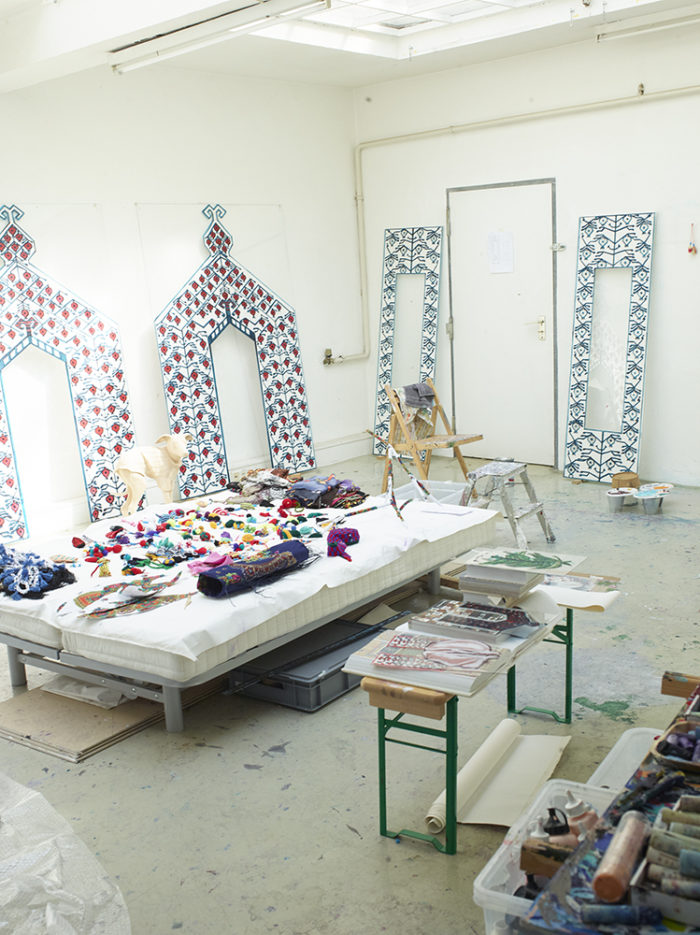
Her 2017 exhibition with Peres Projects was titled “Köpek,” the Turkish word for hounds, and featured a suite of long-eared sculptures guarding her paintings like gargoyles. The Yuz Museum show will also include new wooden sculptures, some of which currently populate the floor. The notched surface of her carved material presented a challenge to the artist who typically works on canvas with oil sticks. “I had to find a new way in, but now I think I’m getting the hang of it. I’m used to the directness and immediacy of the oil stick. This is a more decorative process,” she says, picking up a clock whose hands have been replaced with blue roses. These are the romantic flourishes that enable Kara to bridge the space between the domestic and the mystical. The fantasy is not outside but within. One of Kara’s strengths is her ability to create and break her own rubrics. For example, when working on a group of paintings, Kara tends to stick to a singular color palette of three to four colors. “It’s not really about creating a signature of favoritism, but rather a way for me to focus,” the artist says of her tendency to condense. “Since I’m surrounded on all sides in the studio, I find color helps create a sense of cohesion that enables me to work through an idea without losing myself.”
Kara’s aesthetic idiosyncrasies are what initially drew gallerist Javier Peres to show her work in 2016. “Melike’s pieces are enigmatic, what some would call ‘primitive’ and yet somehow deeply sophisticated in mood,” Peres says. “They are memorable as they seem to depict some social tableaux of a long-lost civilization. Or maybe they are about a future civilization. Her work leaves a lot of room for interpretation. It’s not about deciphering the what, when, where and why, but rather it’s about the work asking questions and opening the possibilities.”
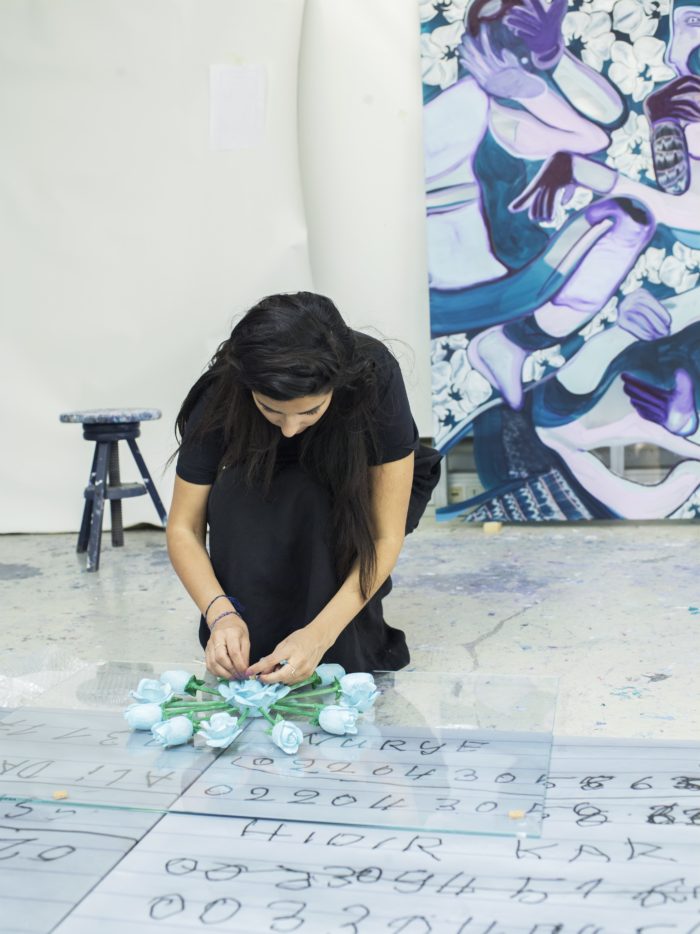
The generosity found in Kara’s work is an extension of her own. Like her shamanistic elders, the artist has a commanding presence—but one that generates new energy rather than domineers. This is the discovery I make during our visit. The ghost or presence that I perceived upon arrival isn’t a function of an outside force but one that radiates outward from Kara’s core and manifests itself in her work. I ask her if anyone has accused her of having powers before, and she laughs: “My family has lived outside of Turkey for three generations. If anything my work is an effort to get in touch with this history, to draw it out and use it to create myths of my own.”

